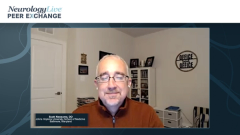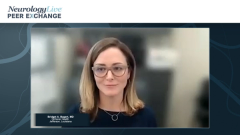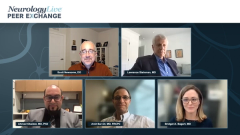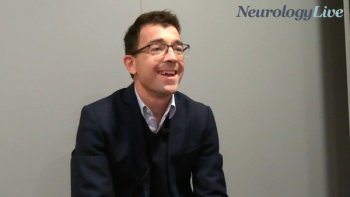
Viruses and the Immune System
Lawrence Steinman, MD, provides an overview of the role viruses play in the activation of the immune system, highlighting their role in triggering neuroinflammatory conditions.
Episodes in this series

Scott Newsome, DO: Hello, and welcome to this NeurologyLive® Peer Exchange titled “Demystifying Multiple Sclerosis Etiology: Molecular Mimicry and the Role of Epstein-Barr Virus.” I’m Dr Scott Newsome, an associate professor of neurology at Johns Hopkins University School of Medicine in Baltimore, Maryland. Joining me in this discussion are a fantastic panel of experts: Dr Lawrence Steinman, a professor of neurology and neurological sciences, pediatrics, and genetics from Stanford University School of Medicine in Stanford, California; Dr Ahmed Obeidat, an associate professor of neurology at the Medical College of Wisconsin in Milwaukee, Wisconsin; Dr Amit Bar-Or, the director of the Center for Neuroinflammation and Neurotherapeutics and the chief of the MS [multiple sclerosis] division at the University of Pennsylvania [Perelman School of Medicine] in Philadelphia, Pennsylvania; and Dr Bridget Bagert, the director of the Ochsner Multiple Sclerosis Center at Ochsner Health in Jefferson, Louisiana. Welcome everyone, let’s get started.
The audience is familiar with this evolving story of EBV [Epstein-Barr virus] and its relationship to multiple sclerosis. There have been a couple of seminal papers that recently published that we’ll talk a little about in a few minutes. But let’s start with some questions. Larry, I want you to take us through them. Why have scientists been so interested in studying viruses as it relates to the immune system?
Lawrence Steinman, MD: There’s an underlying suspicion that many inflammatory diseases are triggered by a microbe of viruses. Many viruses have the proclivity to hang out in the nervous system. We all know about getting chicken pox as a kid and herpes zoster later in life; the herpesvirus goes into a latent period. We’ve all heard about rabies. We used to see smallpox and polio, so it’s no big surprise. Similarly, for the subject of molecular mimicry, perhaps the definitive case of a neural inflammatory disease is campylobacteriosis and Guillain-Barre syndrome. For all those reasons, this may be considered something new and dramatic, but it’s been around for a long time.
Let me add 1 other comment. It’s often been stated that if you want to ruin your career as a multiple sclerosis researcher, just say that you found the virus that triggered the disease. In my career, there have been many candidates proposed and published and many careers that took on a lot of holes. They didn’t sink, but it’s something to keep in mind as we have today’s discussion.
Scott Newsome, DO: That’s really funny. I’ve reflected and tried to look through the literature, and it’s amazing the number of pathogens that have been thought to be related to MS to some degree. EBV seems to be that 1 virus that keeps coming back, like a bad virus in general.
Transcript Edited for Clarity
Newsletter
Keep your finger on the pulse of neurology—subscribe to NeurologyLive for expert interviews, new data, and breakthrough treatment updates.





































